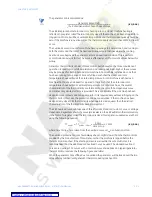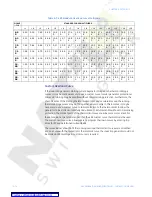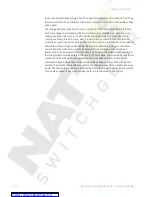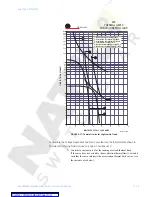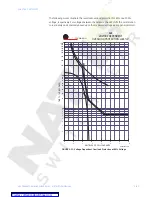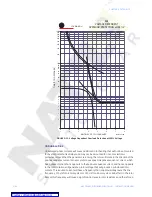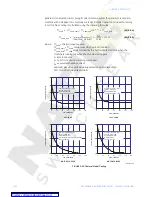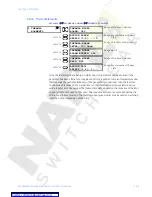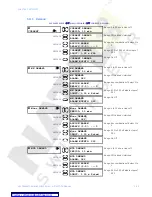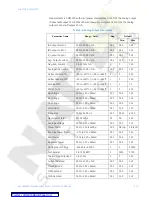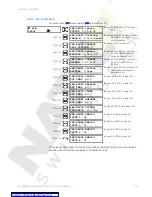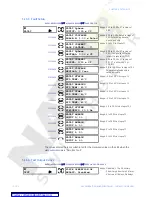
CHAPTER 5: SETPOINTS
489 GENERATOR MANAGEMENT RELAY – INSTRUCTION MANUAL
5–87
Hot/Cold Safe Stall Ratio
When thermal limit information is available for both a hot and cold machine, the 489
thermal model will adapt for the conditions if the
HOT/COLD SAFE STALL RATIO
is
programmed. The value entered for this setpoint dictates the level of thermal capacity
used that the relay will settle at for levels of current that are below the
OVERLOAD PICKUP
LEVEL
. When the generator is running at a level below the
OVERLOAD PICKUP LEVEL
, the
thermal capacity used will rise or fall to a value based on the average phase current and
the entered
HOT/COLD SAFE STALL RATIO
. Thermal capacity used will either rise at a fixed
rate of 5% per minute or fall as dictated by the running cool time constant.
(EQ 5.36)
where: TC
used_end
= Thermal Capacity Used if
I
per_unit
remains steady state
I
eq
= equivalent generator heating current
hot/cold =
HOT/COLD SAFE STALL RATIO
setpoint
The hot/cold safe stall ratio may be determined from the thermal limit curves, if provided,
or the hot and cold safe stall times. Simply divide the hot safe stall time by the cold safe
stall time. If hot and cold times are not provided, there can be no differentiation and the
HOT/COLD SAFE STALL RATIO
should be entered as “1.00”.
RTD Bias
The thermal replica created by the features described in the sections above operates as a
complete and independent model. However, the thermal overload curves are based solely
on measured current, assuming a normal 40°C ambient and normal machine cooling. If
there is an unusually high ambient temperature, or if machine cooling is blocked,
generator temperature will increase. If the stator has embedded RTDs, the 489 RTD bias
feature should be used to correct the thermal model.
The RTD bias feature is a two part curve, constructed using 3 points. If the maximum stator
RTD temperature is below the
RTD BIAS MINIMUM
setpoint (typically 40°C), no biasing
occurs. If the maximum stator RTD temperature is above the
RTD BIAS MAXIMUM
setpoint
(typically at the stator insulation rating or slightly higher), then the thermal memory is fully
biased and thermal capacity is forced to 100% used. At values in between, the present
thermal capacity used created by the overload curve and other elements of the thermal
model, is compared to the RTD Bias thermal capacity used from the RTD Bias curve. If the
RTD Bias thermal capacity used value is higher, then that value is used from that point
onward. The
RTD BIAS CENTER POINT
should be set at the rated running temperature of the
machine. The 489 automatically determines the thermal capacity used value for the center
point using the
HOT/COLD SAFE STALL RATIO
setpoint.
(EQ 5.37)
At temperatures less that the RTD Bias Center temperature,
(EQ 5.38)
At temperatures greater than the RTD Bias Center temperature,
(EQ 5.39)
TC
used_end
I
eq
1
hot
cold
----------
–
⎝
⎠
⎛
⎞
100%
×
×
=
TC
used at RBC
1
hot
cold
----------
–
⎝
⎠
⎛
⎞
100%
×
=
RTD_Bias_TC
used
Temp
actual
Temp
min
–
Temp
center
Temp
min
–
------------------------------------------------------
TC
used at RBC
×
=
RTD_Bias_TC
used
Temp
actual
Temp
center
–
Temp
max
Temp
center
–
----------------------------------------------------------
100 TC
used at RBC
–
(
)
×
TC
used at RBC
+
=

